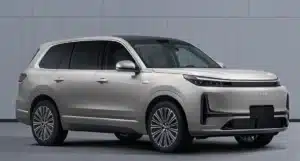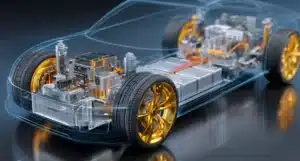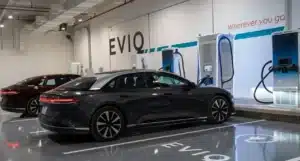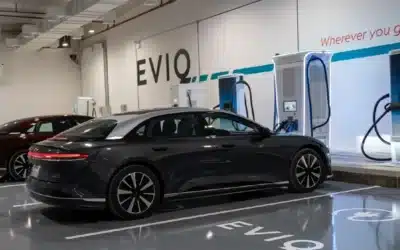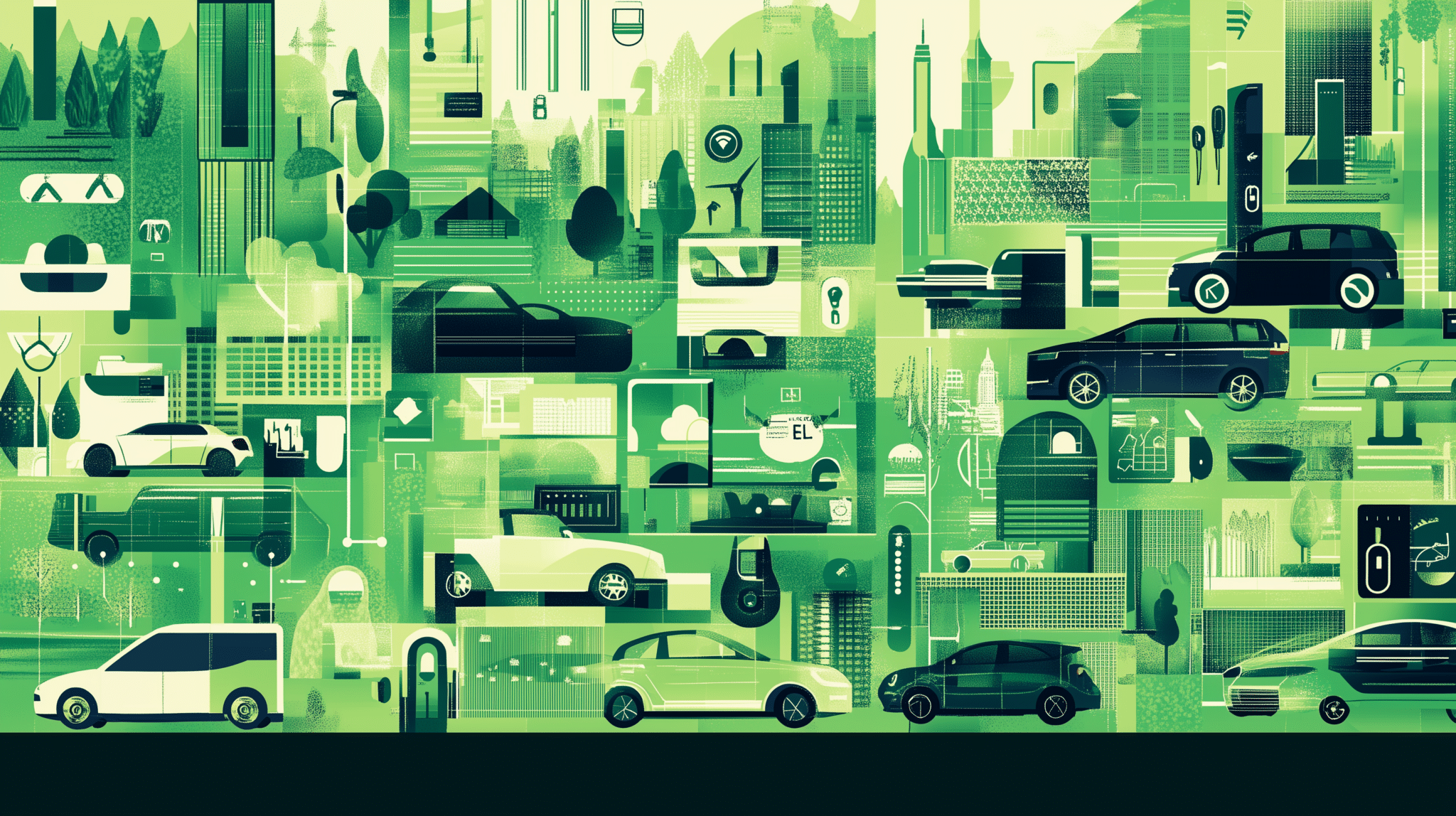
It’s World EV Day! On 9th September 2024, we celebrate the fifth anniversary of World EV Day, which aims to “propel global engagement around EVs and support the wider transition to e-mobility.”
It’s remarkable to see how far EV adoption – and electric vehicles themselves – have progressed since their inception. EVs have shifted from being novelty niche personal transport for paid-up members of Greenpeace to the preferred perks of corporate executives in companies committed to sustainability and social responsibility.
World EV Day has become a focal point for activations and announcements, drawing the attention of global political leaders. Last year, it garnered over 200 million impressions on Twitter/X across 119 countries and has involved major players such as Volvo, Ford, Nissan, FedEx, Auto Trader, Shell Recharge, and many more.
As we celebrate this milestone, let’s take a moment to look back over the past five years to see how the EV landscape has evolved.
2019: World EV Day Celebrates a Fledgling Industry
Five years ago, the EV market was still in its infancy, with electric cars representing only 2.6% of global car sales. Interestingly, China was already leading the charge, with EVs accounting for 4.7% of the market share, thanks to government incentives and ambitious electrification targets. Europe was at 2.9%, driven mostly by early adopters, while the United States lagged at 1.3%.
The Nissan Leaf and Chevrolet Bolt were leading sales for traditional car manufacturers in Europe and America, respectively. However, Tesla was already cultivating a loyal following for its models such as the Model S and Model 3.
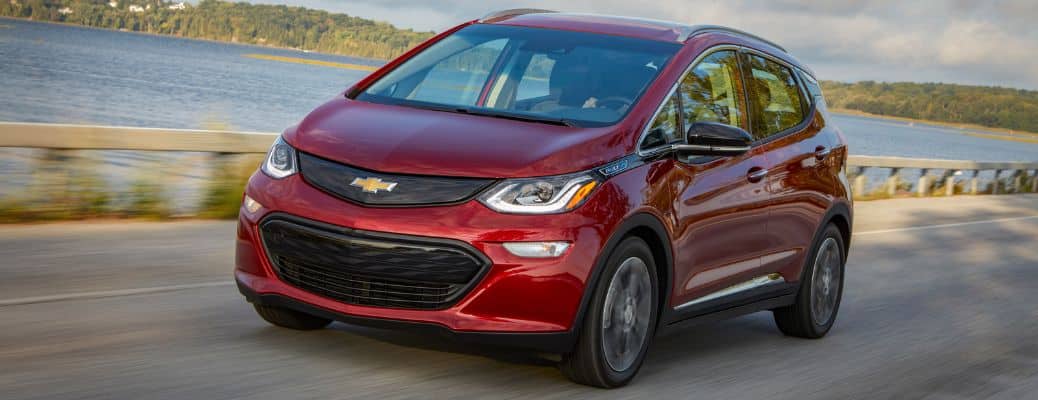
The Chevrolet Bolt was an electric leader in 2019, with Tesla an upstart challenger.
2020: The World Car Market Hit by Covid
While most of the auto industry shut down, production took a tumble (globally down over 16% for all vehicles) and sales were scarce, EVs somehow continued to take hold, growing global market share to 4.2%. Europe saw a dramatic increase, with EVs jumping to 10.7%. China, experiencing a more stringent halt in its industry, saw a modest increase to 5.1%, while the US rose to 1.9%.
In Europe, the introduction of the Volkswagen ID.3 – a significant move by the world’s second-largest car company at the time – stirred interest, as did the Porsche Taycan, Tesla Model Y, and, in America, the Ford Mustang Mach-E.
This period also saw improvements in battery technology, resulting in longer ranges and reduced production costs. If anything, the pandemic highlighted consumers’ desire to move towards more sustainable practices and reduce pollution, particularly in urban environments.
2021: Mainstreaming the EV
As car production began to recover – though volumes wouldn’t return to typical levels until 2023 – EVs continued to assert their place in the motoring landscape, capturing 8.7% of global sales.
European sales accelerated, reaching 18% and briefly establishing the continent as the leader in EV adoption. China quickly gained ground, reaching 12%, driven by both burgeoning domestic brands and international players like Tesla. The US market crept up to 3%, buoyed by new entrants such as Rivian and Lucid Motors.
The expansion of charging infrastructure encouraged more buyers to make the switch, while performance enthusiasts were drawn to the neck-snapping acceleration of models like the Tesla Model S Plaid, Porsche Taycan, and Audi RS E-Tron GT.
Tesla also became one of the world’s most valuable car companies, and the UK and Europe set deadlines to phase out sales of new combustion-engined cars by 2030 and 2035, respectively.
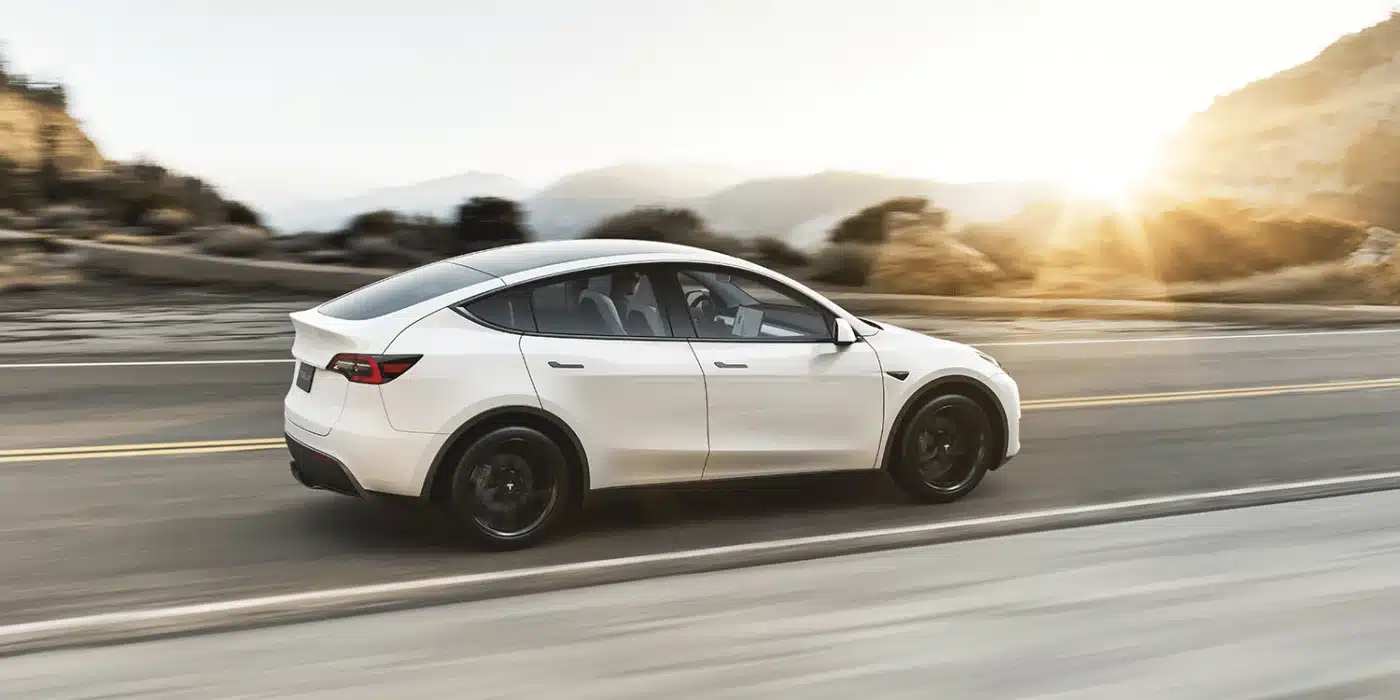
The Tesla Model Y was launched in 2022. It rapidly became the world’s best-selling EV.
2022: EV Global Share Hits Double Digits
2022 marked a critical turning point as global EV sales market share grew to 14%. Europe rose to 21.6%, with nearly two million electric vehicle sales. In Norway – the fifth largest market for EV sales at the time – 79.3% of all passenger cars sold were EVs. China regained momentum, overtaking Europe with a 22% share, thanks to the rise of manufacturers like BYD.
New models such as the Hyundai Ioniq 5 and Kia EV6, offering good range, reliability, and style, began to attract car buyers. Brands like MG helped lower EV entry prices with the MG4 EV. Tesla opened up its fast-charging network to other brands (albeit requiring an adapter), and in America, the arrival of electric trucks like the Ford F-150 Lightning and the Hummer EV helped increase market share to 5.8%.
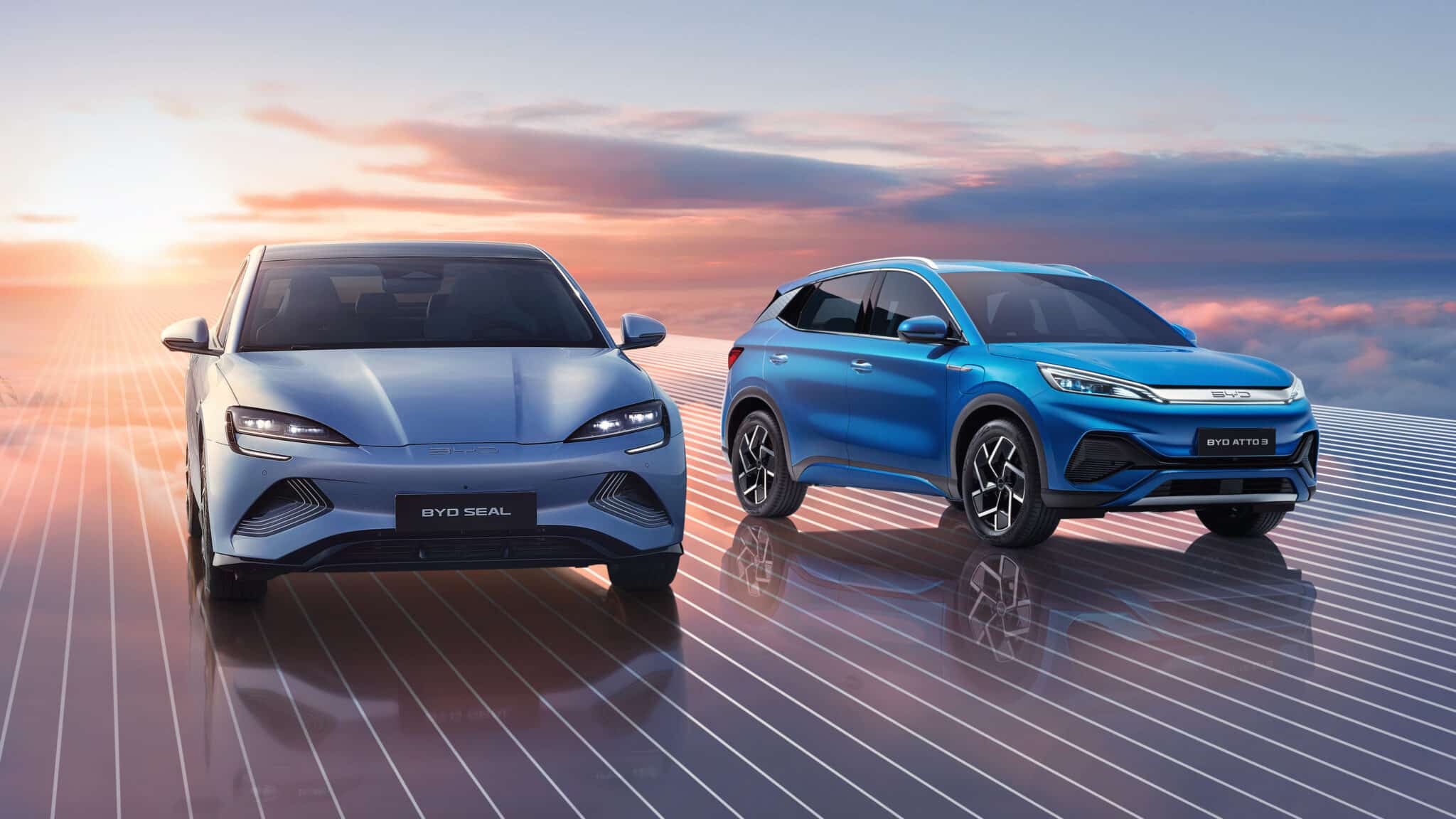
In late 2023 BYD took Tesla’s crown as the largest manufacturer of ‘new energy vehicles’.
2023: The EV Price War!
In April 2023, Tesla sparked a price war by slashing the prices of some of its models by as much as $9,000. As EV prices began to drop from their previously lofty and exclusive levels, sales surged, taking the global market share to 18%. Europe saw a slight increase to 23%, but China raced ahead with a 37% share, saturating its domestic market and shifting focus to exports.
The Tesla Model Y became the world’s best-selling car – a first for an EV. However, by the end of 2023, BYD had overtaken Tesla to become the world’s largest EV manufacturer. Tesla responded with the highly anticipated Cybertruck, and the US EV market share grew to 7.2%.
By this point, almost all major legacy manufacturers were offering at least one EV in their model range. Even Toyota, which had held out longer than most, launched its bZ4X electric SUV.
2024: Electrifying Progress!
Last year, 14 million new EVs joined the global car population, bringing the total to an estimated 40 million. However, with nearly 1.5 billion vehicles worldwide, there’s still a long way to go if the goal is to replace internal combustion engines entirely with electric power.
Total EV sales grew by 21% in the second quarter of 2024 compared to the same period a year ago, and forecasts suggest that the global market share could reach 25% this year, resulting in 17 million vehicles registered. Even in the USA, the Q2 increase over 2023 was 11%.
And Beyond?
While there has been a slowdown in growth in some markets, EV sales continue to rise, bolstered by emerging markets keen to adopt the technology. For instance, in the United Arab Emirates, EV sales skyrocketed from a few thousand to over 30,000 vehicles in 2023. While this was out of a total of 261,000 vehicles, growth is expected to be rapid.
In Saudi Arabia, around 1500 EVs were sold out of over 600,000 vehicles. But that’s set to proliferate. Lucid is establishing the first-ever car manufacturing plant in the Kingdom, initially set to produce 5000 EVs annually, but rising to over 150,000 by the end of the decade.
Additionally, Ceer Motors is a home-grown Saudi EV brand, licensing electric vehicle technology from BMW and investing in a $9bn manufacturing facility to produce and distribute cars in the Middle East.
With Riyadh aiming to increase EV market share to 30% by 2030, BYD has joined forces with Al-Futtaim to create a “local energy ecosystem” having opened its first showroom in Riyadh earlier this year, offering five cars of which three, Han, Atto 3 and Seal, are electric.
Innovations and continued advancements in battery technology, particularly solid-state batteries expected by 2026, along with larger and faster-charging networks, are certain to convert more drivers to EVs in the coming years.
The next five years will be crucial in determining whether the EV sector can fulfil its potential and play a decisive role in mitigating climate change, improving urban air quality, and shaping a sustainable future for all.
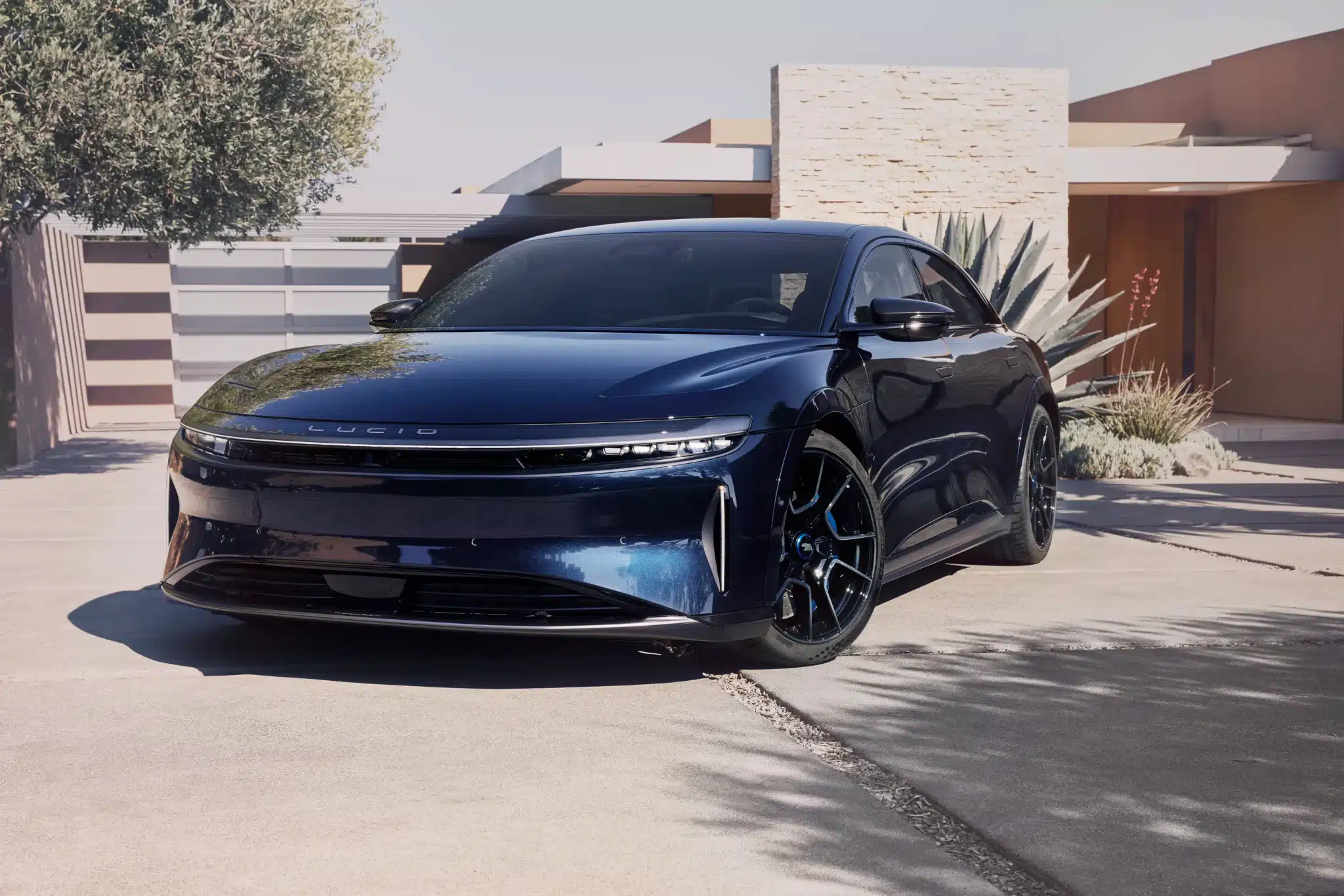
With a huge manufacturing base in Saudi Arabia, Lucid is set to become a potent force in the future.


